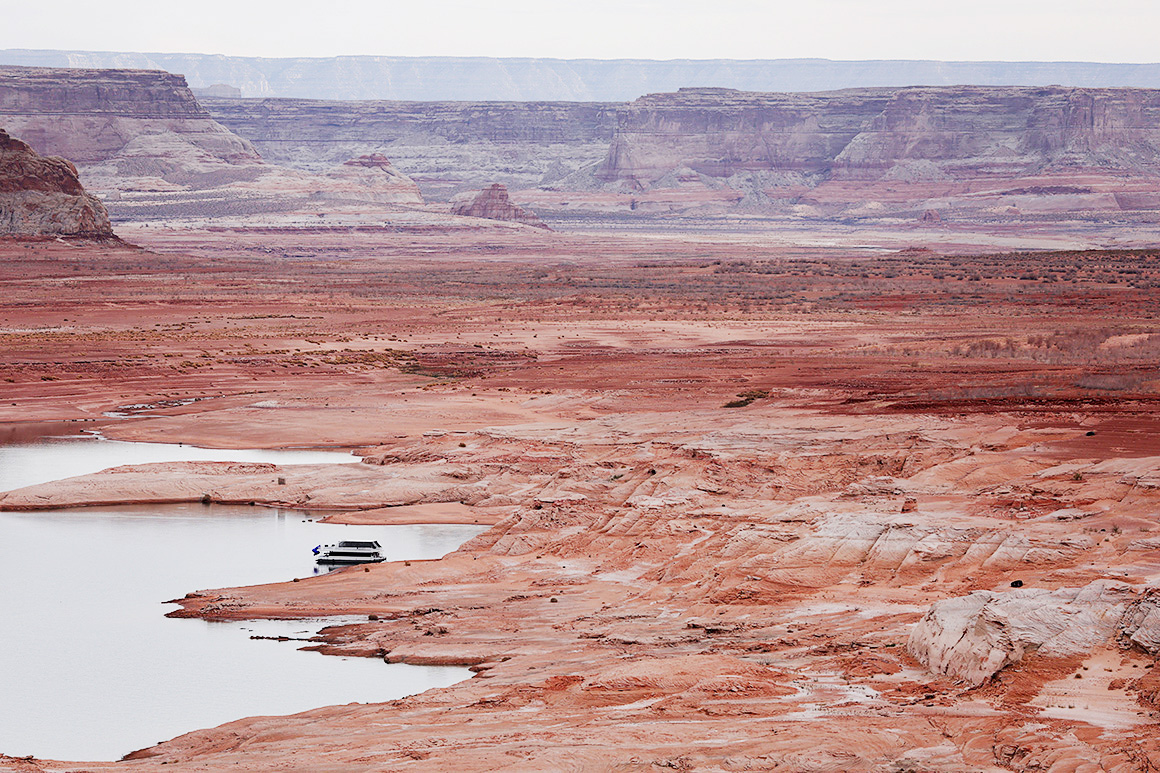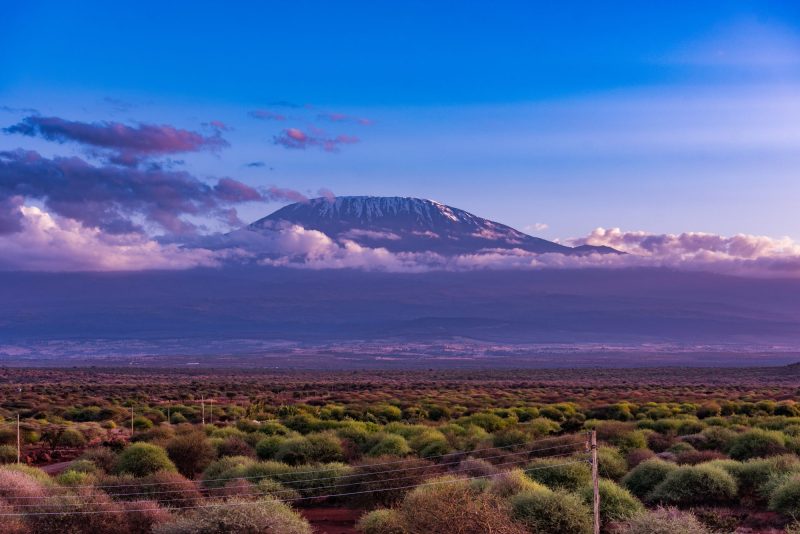A houseboat sat anchored on March 28 on the banks of Lake Powell in Page, Ariz. As severe drought grips parts of the western United States, the water in Lake Powell has dropped to its lowest level since the lake was created by damming the Colorado River in 1963. / Justin Sullivan/Getty Images
By Jennifer Yachnin | E&E News Greenwire
In late April 1996, Lake Powell sat at an elevation of 3,673 feet — just 27 feet below its maximum capacity. At that time of plenty, Arizona lawmakers worried that the state wasn’t using its full share of Colorado River water.
Instead of potentially ceding those flows to California, the state opened a kind of liquid piggy bank, storing away a share of its water for an uncertain future.
In the first year of operations, the Arizona Water Banking Authority set aside 300,000 acre-feet of water. After 25 years, its savings balance — stored underground in facilities across the state — has grown to 3.75 million acre-feet.
Following more than two decades of a “megadrought” that has shrunk the Colorado River — and drawn down the Lake Powell reservoir to levels dangerously close to the cutoff for continued hydropower production — it almost sounds like a parable.
But after saving its water for the dry times to come, Arizona faces a new new challenge: determining how to get the water to the communities that need it, while also making it last as long as possible.
“Now we’re in that situation where we’re transitioning,” Virginia O’Connell, the manager of the Arizona Water Banking Authority, recently said in an interview.
She continued: “There is no more excess water for us to store. … We’re working on phasing into the other responsibilities that we have, of actually making that water available to others when shortages hit us.”
While Arizona’s water banking system isn’t the only one in operation — other storage schemes exist in places like California, which is home to 517 groundwater basins — it is unique in that it does not serve as a clearinghouse, or a middleman that sells and exchanges water credits from users with excess to those in need.
Instead, the Arizona Water Bank operates as a kind of warehouse manager for water, recording excess Colorado River water at sites around the state.
When the state began operating the banking authority in 1997, Arizona wasn’t using its full allocation of Colorado River water, which amounts to 2.8 million acre-feet annually. Officials didn’t want to give up the precious resource and were concerned that California could move to claim the unused portion in federal court.
“It was important for Arizona to secure that water, especially because it has junior rights to the Colorado River,” O’Connell said, referring to the state’s lower priority status for water.
Now Arizona is experiencing that junior status. When cuts are made because of low water levels in the Colorado River Basin, the state is among the first places to feel the impacts.










